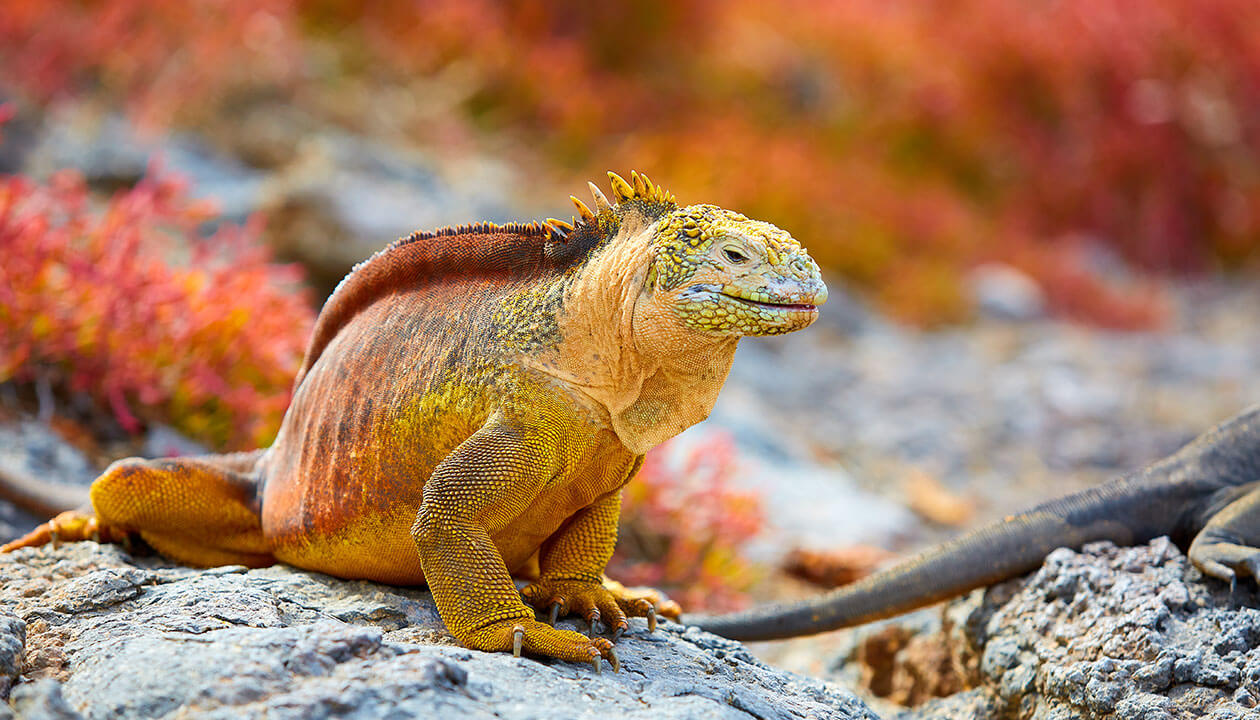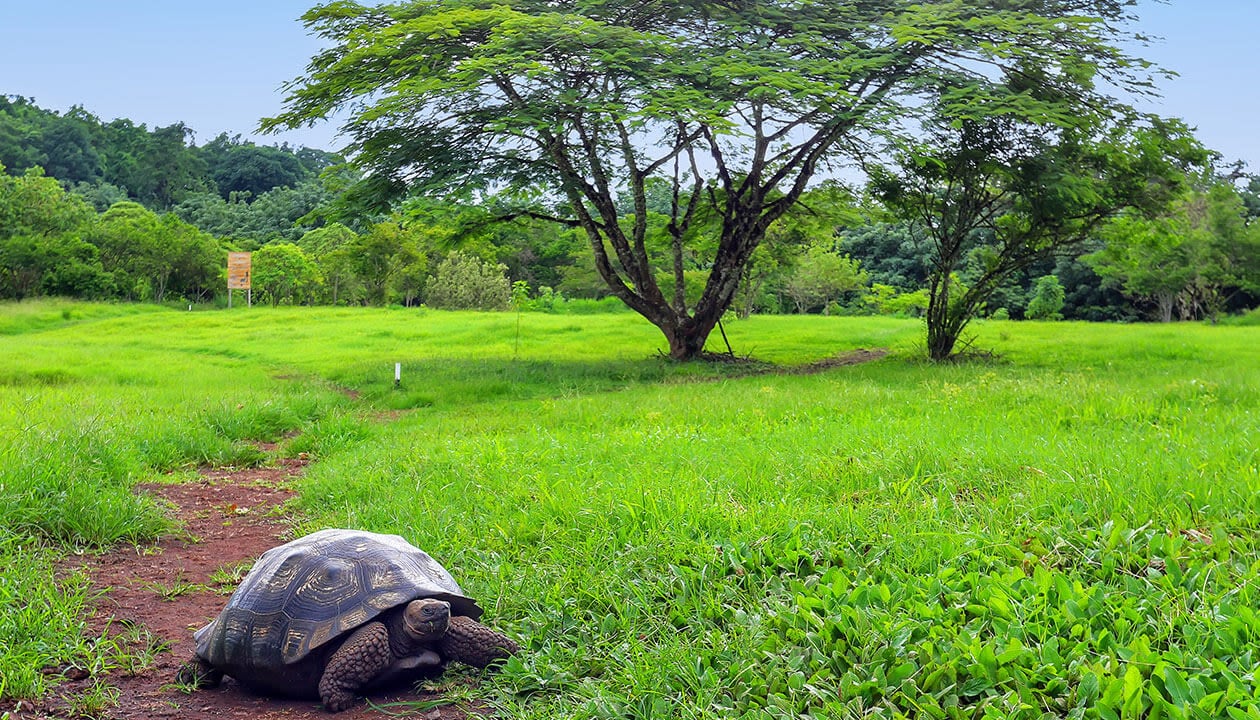Aug 3, 2016
|Last updated on December 23rd, 2020 at 04:26 pm
Discover the Best 14 Islands to Visit in the Galapagos
Do you often wonder which Galapagos Islands are the best to visit? We’ve got you covered. The truth is, every island has an abundance of things to do and see. As Charles Darwin said, “ The Galapagos Islands are a little world within itself,” due to its varied wildlife and bizarre landscapes. Dispersed among the islands are unique and fascinating wildlife. From Galapagos albatross to Blue-footed boobies, to Flightless cormorants and the Galapagos sea lion, giant tortoises, and frigate birds, the Galapagos has it all.
While there is an abundance of wildlife, the island in which you are visiting and the time of year you travel will determine what kinds of animals you will see and the activities you can enjoy. It is important that you learn what each island has to offer so that you can choose an itinerary that reflects your interests. Read on for our list of the best Galapagos Islands to visit and see what best fits your travel style.
#1. Bartolome Island

Why visit Bartolome?
One of the youngest and most photographed islands is Bartolome. This island attracts tourists due to its colorful volcanic rock formations. If you have the energy, climb a steep wooden stairway and then you’ll be rewarded with a 360-degree panorama of the island to enjoy.
What to do on Bartolome Island:
Swimming and snorkeling around Pinnacle Rock are very popular.
What to see on Bartolome Island:
You will most likely spot penguins, green turtles, tropical fish, and reef sharks. Pinnacle Rock is one of the most photographed landmarks in the Galapagos. But if the amount of people snorkeling is overwhelming you, you can always enjoy a dip in the bay.
#2. San Cristobal Island

Why visit San Cristobal?
San Cristobal is one of the few islands in the Galapagos that has a small town. It also is one of the two islands that has an airport and a military base. It was also the island that Charles Darwin first visited in 1835, so it has some appeal for history enthusiasts!
What to do on San Cristobal Island:
One of the highlights of San Cristobal Island activities is a visit to La Galapaguera. This is a sanctuary for giant tortoise species, and there is a breeding program. Other activities on San Cristobal Island include scuba diving at Kicker Rock Islet, and swimming around the white coral beach. It’s a great thing to do if you’re interested in seeing bird species. Many can be found at Brujo Hill!
What to see on San Cristobal Island:
There are numerous bird species at Brujo Hill. Spot the blue-footed booby, Chatham mockingbird, and the San Cristobal lava lizard. The latter two are unique to this island. Kicker Rock Islet is a perfect place to see sea lions, stingrays, sharks, octopi, barracudas, and other neon-colored fish.
Other attractions include Lobos Island and Pitt Point Islet. Lobos Island is home to sea wolves, seals, and small birds. Pitt Point is lush with cacti, trees, and small shrubs. This terrain provides an enjoyable area for short treks where you can see sea turtle nests and the blue-footed booby mating dance.
#3. Espanola Island

Why visit Espanola Island?
Espanola is the oldest island and is one of the best places to experience wildlife in the Galapagos Islands.
What to do on Espanola Island:
Visit Suarez point, one of the most memorable walks in all of the Galapagos. Though this hike can be challenging with small hills and rocky terrain, it’s worth it as this is the only place in the world where albatrosses nest. After checking Suarez point off your list, walk around the island to see the blue-footed booby colonies, sea lions, and marine iguanas.
What to see on Espanola Island:
In the fall, you can see the sea wolves’ colony during their mating season at Gardner Bay. For some fantastic views of Espanola, head to Osborn Islet, where snorkeling with fish and sea lions is available.
#4. Fernandina Island

Why visit Fernandina Island?
Fernandina was formed by the Galapagos hotspot and is the smallest of the archipelago. With only one tourist site, this island is considered one of the most pristine.
What to do on Fernandina Island:
Scuba diving and hiking are popular activities on Fernandina Island. Punta Espinosa is the only site available to tourists. Reaching the site requires a small trek, though it offers great views of the peninsula and the surrounding wildlife. It is also here where guests can dive into the water for water-based activities.
What to see on Fernandina Island:
Due to the cold waters, the flightless cormorants and Galapagos penguins tend to make an appearance. At Punta Espinosa, you can see lava cactus, marine iguanas, snakes, and birds. It is also a great place to see penguins, sea horses, sea turtles, various sharks, and rays.
#5. Isabela Island

Why visit Isabela Island?
Isabela Island was formed by six volcanoes and sits on the equator. It is known as the largest of all the islands. In 1600s, Tagus Cove housed pirates, buccaneers, and whalers. Today, people call Isabela Island home and make their living from fishing, agriculture, and tourism.
What to do on Isabela Island:
You can see the Sierra Negra Volcano, which has the second-largest caldera in the world. Go on a hike to the volcano where you can see great views of Fernandina Island.
What to see on Isabela Island:
Isabela is a great destination to see flora and fauna. The wildlife is unique to this island because there are newer lava fields. In different parts of the island, you’ll find various types of land and marine life. There are six species of wild tortoises on Isabela Island. This island is home to sea lions, turtles, marine iguanas, rays and reef sharks.
More attractions on Isabela Island include:
- Villamil Lagoons – Find flamingos and other migratory birds.
- Tortoise Center of Isabela
- The Wall of Tears – This wall was built by prisoners when the island was a penal colony.
- Tintoreras – These are small islets just off the coast of Isabela Island.
#6. North Seymour:

Why visit North Seymour Island?
This quaint island located only about 100 meters from Baltra is a bird lover’s paradise.
What to do on North Seymour Island:
Go birdwatching of course! Also, the island has a lovely trail that runs for 1.2 miles, from inland to the coastline. The highest point on the island is just 92 feet (28 meters) meaning that North Seymour Island is pretty flat so you can go hiking and admire the beautiful scenery.
What to see on North Seymour Island:
Due to its brushy vegetation, you will find one of the largest populations of blue-footed boobies, swallow-tailed gulls, and frigate birds. May is mating season, so if you’re visiting at this time, entertainment will be provided by the male boobies strutting their stuff for the females!
#7. Santiago Island
Why visit Santiago?
This western island is the result of two overlapping volcanoes, which creates great feeding grounds for many animals.
What to do on Santiago Island:
Go walking on one of the trails at Santiago Island. Enjoy views of the salt mine crater, flamingos, lagoons, and more. You can also snorkel here as the water is often quite clear.
What to see on Santiago Island:
The lava rock creates tide pools full of crabs and other small marine life. Sea lions, turtles, and marine iguanas relax on the beach while Darwin finches and Galapagos hawks fly overhead. If you are interested in geology, you can observe lava flow in Sullivan Bay.
#8. South Plaza Island

Why visit South Plaza Island?
South Plaza was formed by an uplift of the seafloor. In fact, much of the island is the result of pillow lava (lava flowing and cooling under the surface of the sea). Despite its size, it is home to many species and an extraordinary array of fauna.
What to do on South Plaza Island:
The trail on South Plaza will take you through a majestic array of fauna (that includes a decent number of Opuntia cacti) up towards the biggest highlight – the bachelor sea lion colony.
What to see on South Plaza Island:
Home to one of the largest colonies of Galapagos sea lions and also a large colony of land iguanas. Here are 6 out of the “BIG 15”: Galapagos sea lion, land iguana, marine iguana, frigatebird (great and magnificent), blue-footed booby, Nazca booby.
#9. Santa Cruz Island

Why visit Santa Cruz Island?
The second-largest island in the Galapagos, Santa Cruz is a volcanic island in the heart of the Galapagos. It’s known for sandy beaches like El Garrapatero.
What to do on Santa Cruz Island:
On Santa Cruz Island, there are a couple of activities that guests enjoy. For a volcanic experience, walk through the lava tunnels on Los Gemelos. Los Gemelos (the twins) are two craters that formed with the collapse of a magma chamber. For those who wish to be in the water, swim with sea turtles at Las Bachas Beach. Birdwatching here is also encouraged!
What to see on Santa Cruz Island:
See the giant Galapagos tortoises at the Galapagos National Tourism offices in Puerto Ayora (the main town). Here, they study and breed these gentle giants, weighing up to 900 lbs and living over 100 years! Princes Ranch and the El Chato Tortoise Reserve are two additional locations that allow you to see giant tortoises in their natural habitat.
#10. Floreana Island

Why visit Floreana Island?
Floreana was inhabited by pirates and whalers in the 1600’s and then used as a penal colony. Due to human disturbances and the introduction of non-native seeds and animals, the flora and fauna have been wiped out. However, this does not take away from the natural beauty of Floreana.
What to do on Floreana Island:
Cormorant Point has a few beaches that you can relax at, amongst the bright pink flamingos. For a splash of education, take a trip to Post Office Bay. Learn about the history of the human experience, of whalers and pirates, in the Galapagos Islands. Today, you can send a postcard from here, as long as you take a few to send to fellow travelers.
What to see on Floreana Island:
If you’re lucky, you may see dolphins swimming in the water while at the beach. Beyond the allure of the blue water, there are plenty of cacti and bushes making Floreana Island a favorite amongst plant enthusiasts
#11. Santa Fe Island

Why visit Santa Fe Island?
Santa Fe is perfect for those who want to go on long walks and keep an eye out for wildlife.
What to do on Santa Fe Island:
Walk the trails of the Opuntia Cactus Forest on one of the oldest islands in the Galapagos.
What to see on Santa Fe island:
There is always something to see at Santa Fe! Turn your iPhone on “do not disturb,” and keep your eye out for manta rays, sea turtles, sea lions, and giant iguanas lounging on the beaches and rocks.
#12. Baltra Island

Why visit Baltra Island?
Baltra was a US Army Air Force base during World War II. Today, it is where you may find yourself flying in or out.
What to do on Baltra Island:
Baltra is the gateway to other islands. While the US Army Air Force base is closed to visitors, there is not much to do here.
What to see on Baltra Island:
The Galapagos Conservatory is trying to re-introduce the Galapagos Land Iguana, so you will see them in increasing numbers over the next few years. Sea lions and birds are often spotted here as well.
#13. Rabida Island

Why visit Rabida Island?
Mostly known for its red sandy beaches, this island is preferable for bird watching and photography.
What to do on Rabida Island:
If you are interested in swimming and snorkeling, you can see sea turtles, rays, eels, reef sharks, and penguins.
What to see on Rabida Island:
Spot Pink flamingos enjoying the saltwater lagoon while brown pelicans nest in the salt brush. You’ll also see marine iguanas and sea lions lounging on the beach.
#14. Genovesa Island

Why visit Genovesa Island?
Genovesa is one of the few islands in the northern region that can be visited. known as the “Bird Island” for the large and varied colonies that nest there. The island was formed by a volcano erupting in the past. This has led to the development of a submerged crater and can be seen when you arrive at Darwin Bay, flanked by steep cliffs.
What to do on Genovesa Island:
Definitely explore the terrain of Genovesa Island and go birdwatching. There are plenty of bird species to spot while here.
What to see on Genovesa Island:
There is a very large population of Red-footed boobies, Nazca booby, Red-billed tropicbirds, Mockingbirds, Finches, Storm petrels, and Swallow-tailed Gulls. You will also be sure to see a lot of Frigate birds. Some lucky visitors may even get to see a Short-eared owl.






